What Should I Look for in a Beginner Badminton Stringing Course?
When searching for a beginner badminton stringing course, it’s important to find a program that offers a solid foundation in both the theoretical and practical aspects of racket stringing. Look for a course led by an experienced instructor who can clearly explain the fundamentals. The course content should cover the basics of string types, how different string tensions affect a badminton racket, and the anatomy of a racket itself. A good beginner course will ease you into the world of stringing, ensuring you understand the ‘why’ behind each step, not just the ‘how’. This initial stringing experience is important.
The course should also emphasize hands-on practice. While theory is important, racquet stringing is a skill honed through doing. Ensure the course includes sufficient time for you to work with different badminton string materials and practice on various racket frames. Learning to handle the string correctly, understanding how to avoid damaging the racket frame during the stringing process, and getting comfortable with the basic tools are key objectives for any beginner. The course should provide a clear path to understanding the nuances of each string.
Finally, a quality beginner badminton stringing course will teach proper stringing techniques from the outset. This means learning the correct way to secure a string, tie a secure knot, and maintain consistent tension across the entire string bed. Starting with good habits prevents the development of bad ones that can be hard to break later. A focus on precision and care for the badminton racket ensures that the stringer learns to provide a reliable stringing service. This foundational course is your first step towards potentially becoming a certified badminton stringer.
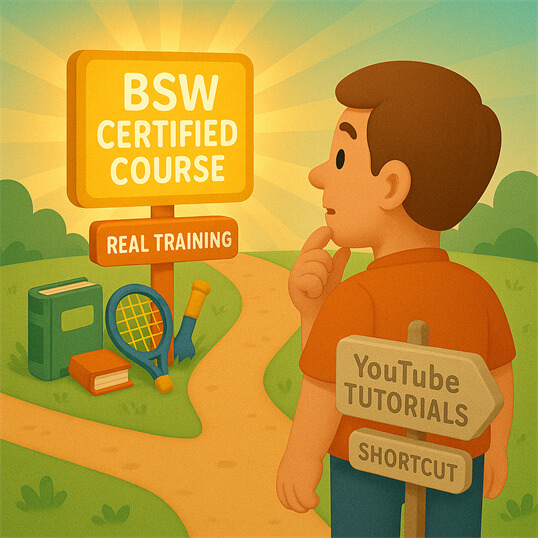
How Does a Badminton Stringing Course Help Improve My Racket Performance?
A comprehensive badminton stringing course imparts in-depth knowledge on how the string and its tension directly influence racket performance. You’ll learn that the choice of badminton string – its material, gauge, and properties – combined with the tension at which it’s installed, can dramatically alter how a badminton racket feels and plays. For instance, a lower string tension can provide more power and a larger sweet spot, while a higher string tension offers more control and precision for a skilled badminton player. Understanding these dynamics allows a stringer to tailor the racket stringing to specific player needs.
The course will delve into how different stringing techniques can affect the longevity of the string and the racket frame. Learning the correct stringing method ensures that the string is installed without causing undue stress to the badminton racket grommets or frame. This not only preserves the integrity of the equipment but also ensures the string performs optimally for a longer period. A well-strung racket will have a consistent feel, allowing the badminton player to execute shots with greater confidence and accuracy, knowing their string setup is reliable.
Furthermore, a badminton stringing course can teach you about customization. As a stringer, you’ll be able to advise players on the best string and tension combinations for their various playing styles and preferences. This ability to personalize a racket setup is important. Whether it’s for a casual player or someone preparing for a tournament, the right string job, using the correct badminton string, can make a significant difference in their game. The course helps you understand how to achieve this level of professional stringing.
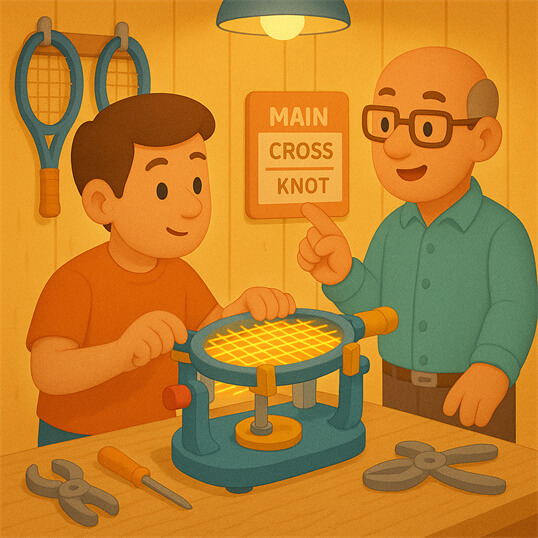
What Key Stringing Techniques Will I Learn in a Course?
In a quality badminton stringing course, you will learn a variety of key stringing techniques essential for handling any badminton racket. One of the first things covered is the correct mounting of the racket onto the stringing machine. This step is important to ensure the racket frame is supported evenly and doesn’t warp under the pressure of the string. You’ll also learn about different stringing patterns, such as 2-piece or 1-piece stringing, and when to use each stringing method for a particular badminton racket.
Another important technique is mastering the use of tools like the starting clamp, flying clamps, awl, and plier. You’ll learn how to use a clamp effectively to hold string tension without damaging the string itself. The course will guide you through the process of weaving the main and cross strings, ensuring each string is pulled to the correct tension and that the crosses are woven without notching the mains. Proper knot tying is also a major focus, as a poorly tied knot can lead to premature string breakage or loss of tension in the badminton string.
The course content will also cover techniques for managing different types of badminton string, as some are more delicate or slippery than others. You’ll learn how to adjust your technique for thinner gauge string or stiffer polyester string to ensure a consistent and high-quality outcome. These stringing techniques are fundamental for any aspiring stringer aiming to provide a reliable stringing service for a badminton racket. Learning these details about each string is important.
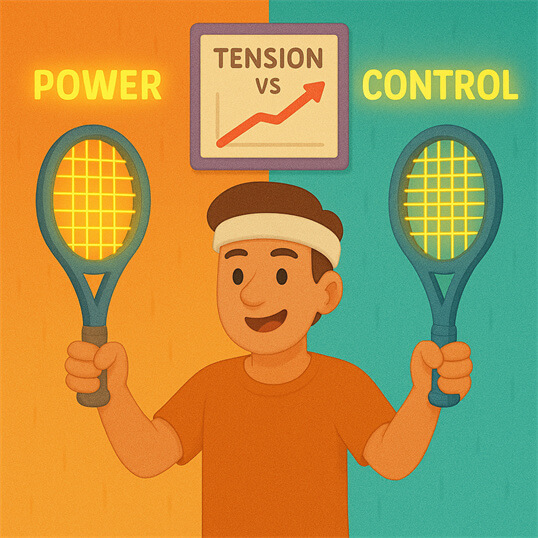
Why is Certification Important for a Badminton Stringer?
Certification for a badminton stringer serves as a formal recognition of their knowledge and skills in racket stringing. Achieving a certificate from a reputable organization, like those offering Best Stringer Worldwide programs, signifies that the stringer has met a certain standard of competence. This is important because proper stringing directly impacts a badminton racket’s performance and longevity. A certification tells clients that the stringer has been trained to handle their racket professionally and understands the nuances of different string types and tensions.
For the stringer themselves, going through a certification course provides a structured learning path and ensures they are up-to-date with the latest stringing techniques and string technology. The exam process for certification typically involves practical assessments, where the stringer must demonstrate their ability to string badminton rackets accurately and efficiently. This process helps to solidify their skills and identify any areas for improvement. A certification can boost a stringer’s confidence and credibility.
Furthermore, a badminton stringing certification can open up more opportunities. Clients are often more willing to trust their expensive badminton racket and specific string requests to a certified badminton stringer. It can also be a prerequisite for working at pro shops, clubs, or even at a tournament level. Ultimately, certification acts as a quality benchmark in the racquet stringing industry, assuring players they are receiving a quality stringing service from a qualified professional stringer. Different certification levels may exist, indicating varying degrees of expertise.
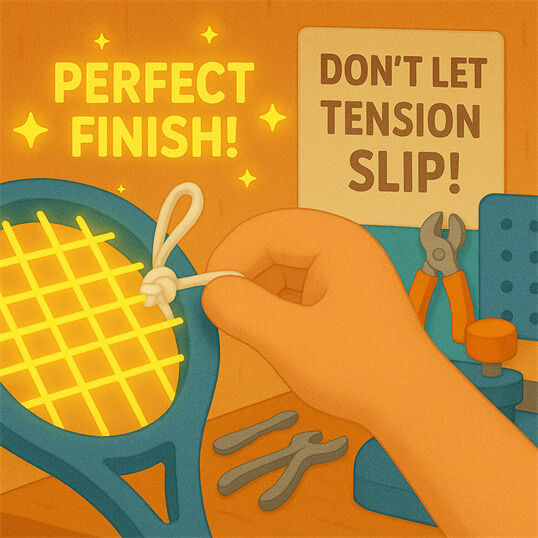
What Course Content is Typically Included in Badminton Stringing Online Courses?
Badminton stringing online courses have become increasingly popular, offering flexibility for learners. Typically, the course content for an online certified program will cover a wide range of theoretical knowledge. This course includes detailed modules on string materials (nylon, multifilament, natural gut, polyester), string construction, and how these factors affect playability and durability of the badminton string. You’ll learn about different string gauges and their impact on the badminton racket.
The online courses often feature video demonstrations of key stringing techniques. This visual learning can be very effective for understanding processes like mounting the racket, starting the string, weaving patterns, using a clamp correctly, and tying various types of knots. Some online courses also provide in-depth guides on troubleshooting common stringing problems, such as mis-weaves or string slippage. The objective is to provide a comprehensive understanding of racquet stringing principles before any hands-on work might occur.
Beyond the technical aspects of the string and racket, course content in online courses might also touch upon customer service aspects for a stringing service, such as how to consult with a badminton player to understand their player needs and recommend appropriate string setups. While online courses can’t offer direct hands-on supervision like an in-person workshop, they often include interactive quizzes and assignments to test understanding, and some may culminate in an online exam for a basic qualification or a precursor to a practical certification.
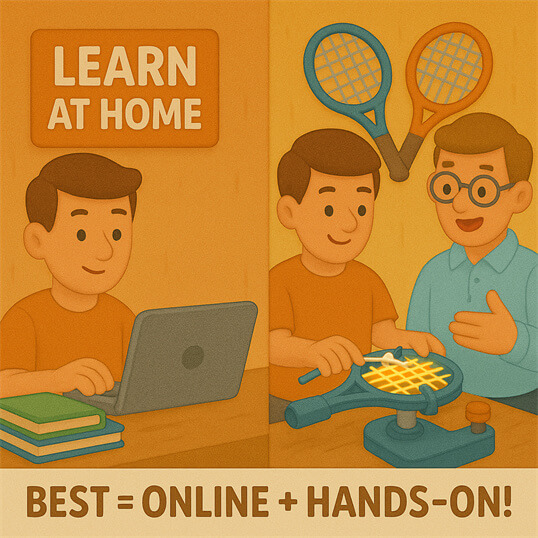
How Do Instructors Personalize Training in a Stringing Workshop?
In a stringing workshop, instructors have the advantage of direct interaction, allowing them to personalize the training experience significantly. An instructor can observe a student’s technique with a string and racket in real-time and provide immediate, tailored feedback. If a student is struggling with a particular aspect, like maintaining consistent tension with the stringing machine or tying a secure knot, the instructor can offer one-on-one guidance and demonstrate the technique again, breaking it down into simpler steps. This personalized attention is important for mastering the hands-on skills required for better racquet stringing.
Instructors in a stringing workshop can also adapt the course content to the individual’s existing skill level and learning pace. For a beginner, the focus might be on mastering the fundamentals of handling the string and badminton racket, while a more experienced stringer might receive coaching on advanced techniques or specialized stringing patterns. The instructor can also answer specific questions related to unique racket types or challenging string materials, like those from Yonex, providing in-depth knowledge that goes beyond a standard curriculum.
Moreover, a good instructor will try to understand each student’s objective for taking the stringing workshop. Whether the goal is to start a home-based stringing service, work in a retail environment, or simply to string their own badminton racket and those of their family, the instructor can tailor advice and focus areas accordingly. This ability to personalize the learning journey ensures that each student gets the most value out of the workshop and develops the specific badminton stringing skills they need. The stringing experience becomes much richer with this focused guidance on the string.
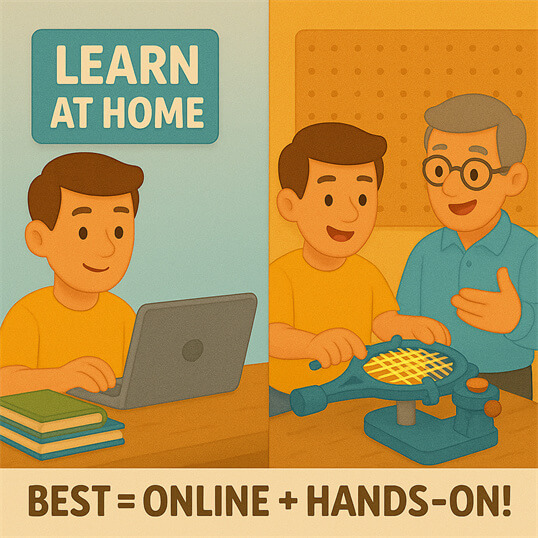
What is the Objective of Achieving a Master Stringer Certificate?
Achieving a Master Stringer certificate represents the pinnacle of racquet stringing expertise and is a significant qualification for any stringer. The primary objective of this advanced certification is to validate an individual’s comprehensive mastery of all aspects of stringing, from basic techniques to the most advanced techniques and problem-solving. A Master Stringer is expected to have in-depth knowledge of string technology, racquet technology, and how these elements interact to affect performance for various playing styles across different types of badminton and even tennis rackets.
The course and rigorous exam process to become a Master Stringer ensure that the candidate can not only perform high-quality stringing on any racket using any string type but can also manage complex situations. This includes tasks like customization of string patterns, repairing grommets, understanding frame integrity, and providing expert consultation to elite players. The objective is to produce stringers who are not just technicians but true artisans and consultants in the field of racquet stringing.
A Master Stringer certificate also often signifies the ability to train other stringers. This means they have the communication skills and knowledge and skills to effectively teach stringing techniques and mentor aspiring professionals. For clients, engaging a Master Stringer provides the highest level of assurance that their badminton racket or other racquet will receive quality care and an expertly applied string job, perfectly tailored to their needs. This certification is recognized globally as a mark of excellence.
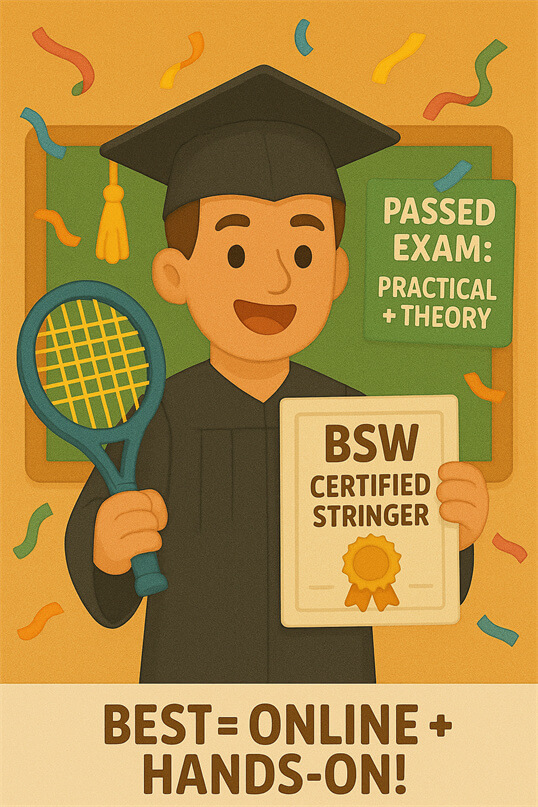
How Do Hands-On Stringing Courses Compare to Online Certified Programs?
Hands-on stringing courses, often conducted as a workshop, offer an immersive learning environment where students can physically practice stringing a badminton racket under the direct supervision of an instructor. The immediate feedback and ability to ask questions in real-time are important for developing the tactile skills needed for proper stringing. Students get to use a stringing machine, handle various string types, and learn the feel of pulling tension and securing a clamp correctly. This practical stringing experience is important for building confidence and proficiency.
Online certified programs, on the other hand, provide excellent flexibility and accessibility, allowing individuals to learn racquet stringing at their own pace and from anywhere. These online courses are typically strong in delivering theoretical and practical knowledge through video tutorials, diagrams, and written materials covering a wide range of string and racket information. While they can demonstrate stringing techniques effectively, they lack the direct, supervised hands-on element unless paired with a requirement for students to submit videos of their work or attend a separate practical exam.
Ultimately, the best approach often combines elements of both. Many aspiring stringers start with online courses to build a solid foundation of knowledge about string properties and stringing theory, then supplement this with an in-person workshop or hands-on training to refine their practical badminton stringing skills. For achieving a full certification that is widely respected, practical assessments are almost always a key component, ensuring the stringer can indeed apply their learned knowledge and skills to a badminton racket and its string.
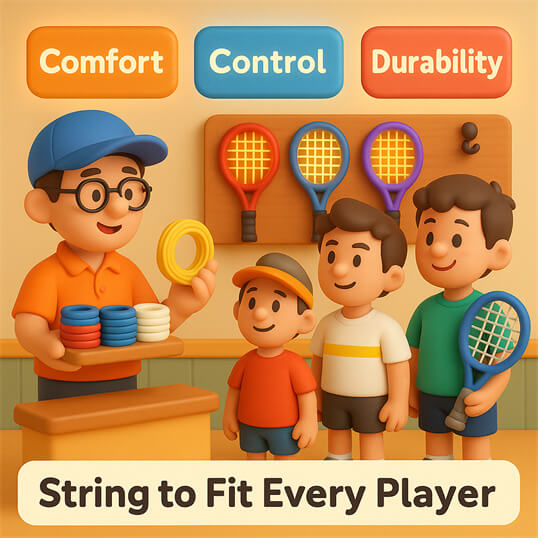
What Tools are Essential, and How Will I Learn to Use a Stringing Machine?
A comprehensive badminton stringing course will introduce you to all the essential tools required for racket stringing. These include a starting clamp (to hold the first string), awls (to clear blocked grommet holes and help with weaving string), a plier (for pulling string through tight spots or removing old grommets), cutters (for snipping the string), and potentially a tension calibrator. The course will teach you the specific function of each tool and, importantly, how to use them safely and effectively without damaging the badminton racket or the string.
The centerpiece of any stringing operation is the stringing machine. You’ll learn about the different types of stringing machines – manual (crank or drop-weight) and electronic – and their respective advantages. The course will provide detailed instruction on how to operate the specific stringing machine available, including how to calibrate it for accurate tension, the proper mounting procedure for a badminton racket, how to use the machine’s clamps to secure the string, and how to engage the tensioning mechanism for each pull of the string.
Learning to use the stringing machine correctly is paramount for consistent and professional stringing. The instructor in a hands-on course will guide you through your first few racket string jobs, ensuring you become comfortable with the machine’s operation. This practical training helps build muscle memory and an understanding of how the machine interacts with the string and badminton racket, which is important for any aspiring stringer. The goal is to make you proficient with this essential piece of equipment for handling any badminton string.
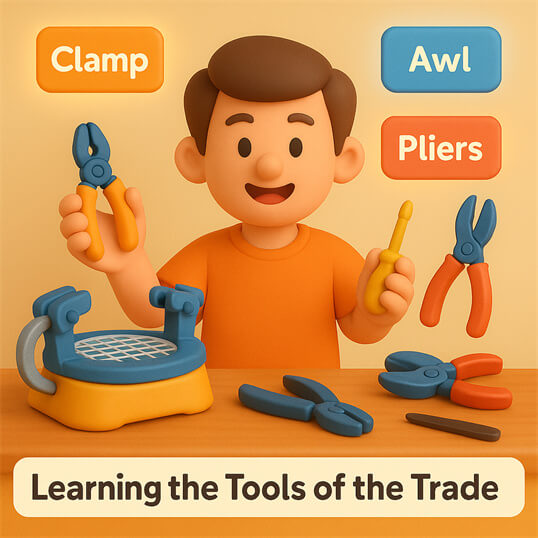
What is the Proper Stringing Method for Different Types of Badminton Rackets?
The proper stringing method for a badminton racket can vary slightly depending on the racket’s design, the manufacturer’s recommendations (e.g., for a Yonex racket), and the specific badminton string being used. A good badminton stringing course will teach you to identify these differences and adapt your stringing techniques accordingly. For example, some badminton rackets may require specific starting points for the string or have unique grommet systems that need careful attention during the stringing process.
The course will cover standard stringing patterns, such as the 2-knot or 4-knot methods, and explain the pros and cons of each. You’ll learn the importance of following the recommended pattern to ensure even tension distribution across the string bed and to avoid putting excessive stress on any single point of the badminton racket frame. The instructor will emphasize consistency in pulling tension for each string and in weaving the cross strings to create a uniform and durable string bed. The stringing method also includes securing the string with a well-tied knot that won’t slip.
Understanding how to handle different types of badminton racket frames, from more flexible to very stiff ones, is also part of learning the proper stringing approach. Some frames might be more susceptible to distortion if not mounted or strung correctly. The course aims to equip the stringer with the knowledge and skills to approach each badminton racket with care, ensuring the string job enhances its performance and preserves its lifespan. This attention to detail for each string and racket is what defines a quality stringing service.
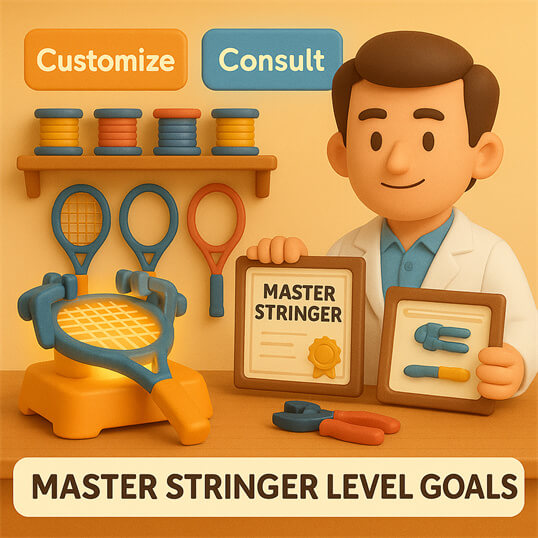
Key Takeaways:
- Foundational Knowledge: A good badminton stringing course provides a solid foundation in string types, tension, racket anatomy, and proper stringing techniques.
- Skill Development: Learning involves mastering stringing techniques, using tools like clamps and a stringing machine, and understanding different stringing methods for various badminton racket models.
- Performance Impact: The choice of badminton string and tension, applied correctly through skills learned in a course, significantly impacts racket performance and durability.
- Certification Value: Certification from reputable bodies like Best Stringer Worldwide validates a stringer’s expertise, enhances credibility, and can open professional opportunities. It often involves a course and an exam.
- Personalized Learning: Stringing workshops allow instructors to personalize training, offering tailored feedback and focusing on individual player needs or stringer objectives.
- Tool Proficiency: Essential tools include awls, pliers, cutters, and clamps, with the stringing machine being central to the stringing process. A course teaches their correct usage.
- Advanced Levels: Achieving a Master Stringer certificate signifies the highest level of qualification, encompassing advanced techniques, in-depth knowledge of string technology, and customization skills.
- Course Options: Both online courses and hands-on workshops offer distinct benefits, with a combination often providing the most comprehensive stringing experience to learn how to string badminton rackets effectively.
